Tsatsas and Bumpas for the Stupa
As the future stupa that will welcome a part of Shamar Rinpoche’s relics is slowly taking form, we continue our discovery of the secrets of the fabrication of the various elements that it will contain. This time, let’s take a look at tsatsas and bumpas!
As many of you already know, a tsatsa is a Buddhist image made of clay or plaster and created using a mold or stamp. The stupa’s tsatsas were made using silicone molds and were mostly fabricated specifically for this project.
There are two types. Some are made in the image of Amitabha Buddha. These come from the same types of molds that were used four years ago to make the supports for offering that contribute to financing the Institute. The other tsatsas are in the shape of stupas: a 15-centimeter tall large version decorated with representations of one hundred small stupas to amplify the positive effect and a 5-centimeter tall small version depicting the eight types of stupas.

Tsatsas of Amitabha Buddha drying
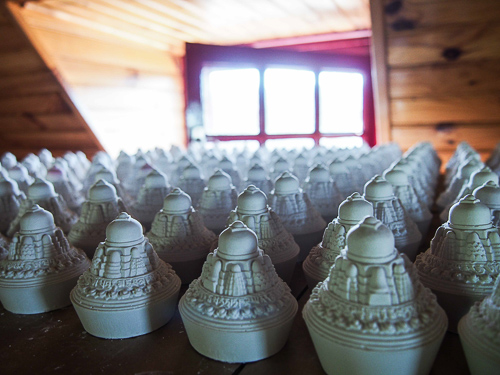
Little tsatsas
What makes these statues and figurines so special? The secret lies in their fabrication… Though the tsatsas are made of plaster, this material is far from being their essential component. Within each sculpture there is a mantra roll as well as precious substances dissolved in the water used to mix the plaster. And what substances they are! Nothing less than the ashes of Shamar Rinpoche mixed with blessed pills going back to those made by the 1st Karmapa!
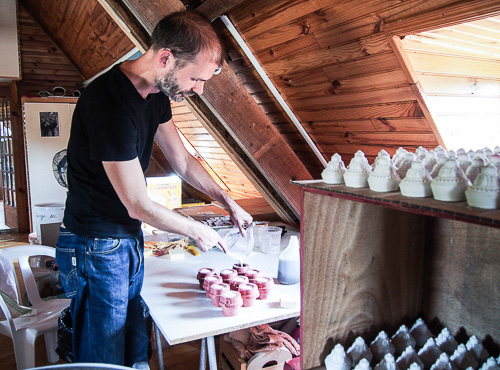
The liquid mixture being poured into molds
Once this sacred mixture is ready, one just has to fill the molds and wait for it to solidify. Then, the figurines are taken from the molds and set out to dry. Finally, the tsatsas shaped like stupas are painted in the five colors (which, as we now know, are connected to the five enlightened wisdoms) and topped with a small square of fabric that symbolizes the Buddha’s parasol (1).
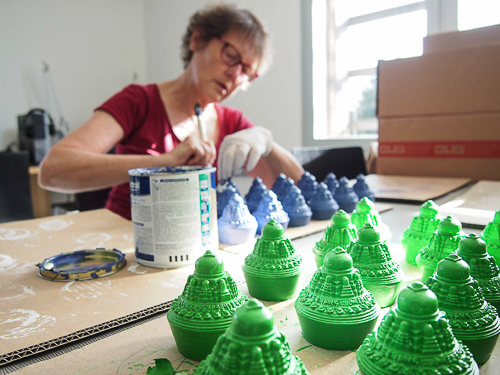
↑ Painting the tsatsas in the five colors
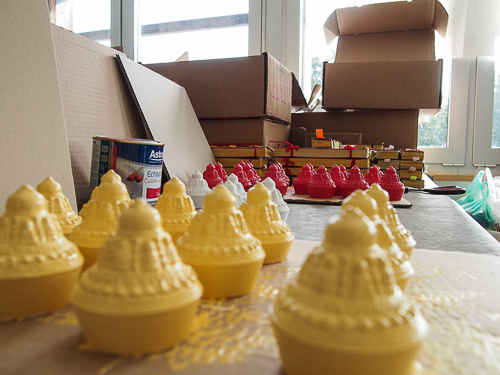
As for the tsatsas of Amitabha, they are not painted. The plaster used to make them already contains the red typical of this Buddha.
At the conclusion of several months of fabrication that took place above the temple with the support of practitioners and supporters around Dhagpo, we have nearly 300 large stupas, 2,000 small ones, and 300 Amitabha Buddhas!
As for the bumpas (the Tibetan term), these are vases. They were placed in the foundations of Shamar Rinpoche’s stupa in early September. There are two kinds: those in golden metal and those in clay. Each vase has a cover to best protect its precious contents.
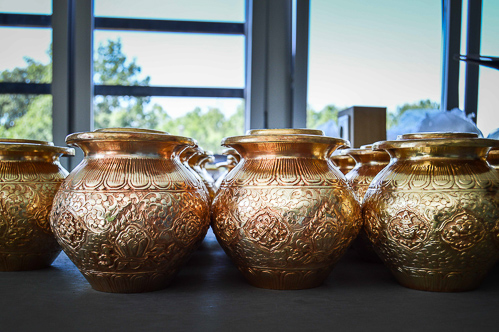
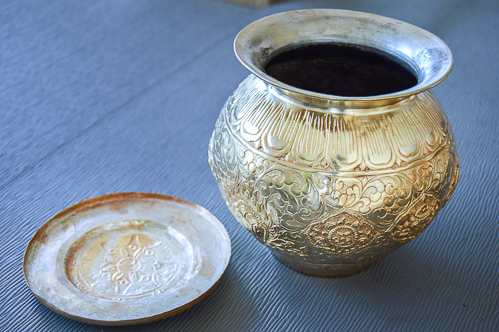
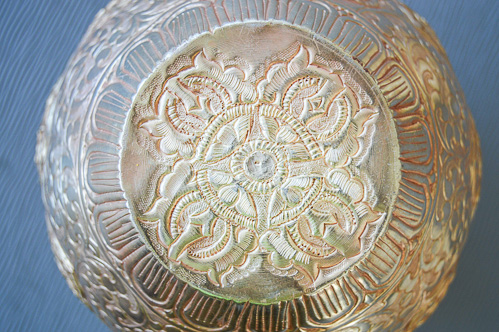
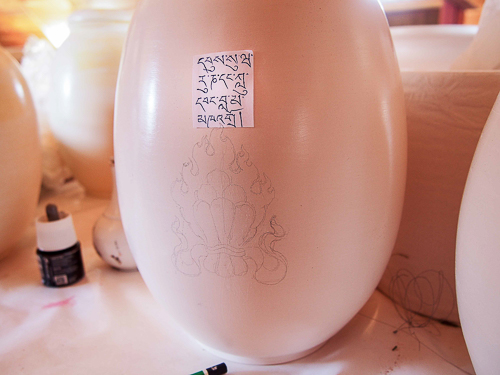
Clay bumpas
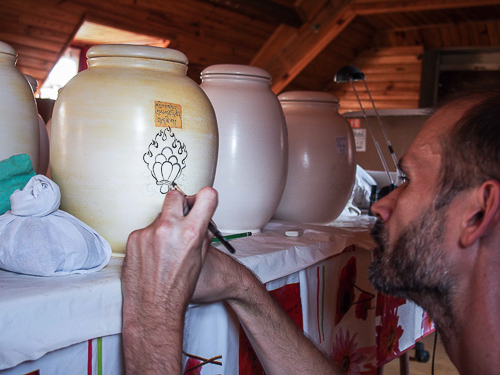
Decorating a clay bumpa
Each of the vases is indeed filled with sacred, consecrated substances. Amidst all of these substances stands an element that we now know well: a sokshing. All of the bumpas carry a representation of the three jewels and are topped with fabric in the famous five colors..
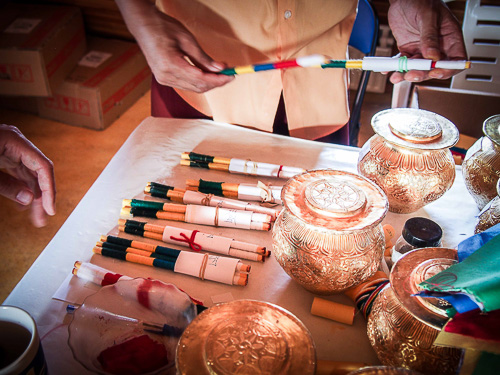
Sokshings within the bumpas
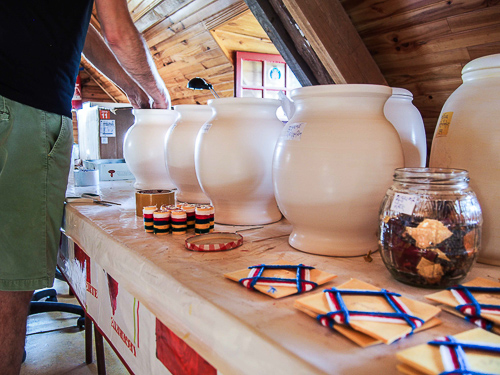
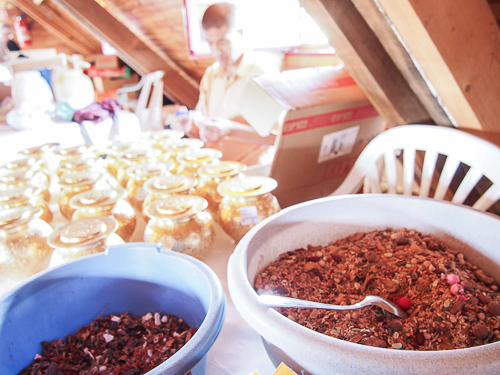
Substances that will be stored within the bumpas
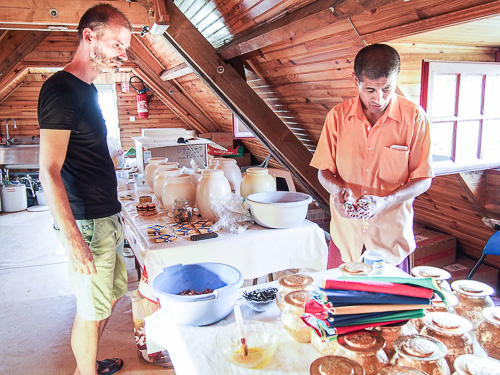
↑Lama Jampa and Sylvestre fill the bumpas
In total, we count eighteen bumpas: 9 tashi terboum (“vases of wealth”) thirty centimeters tall, in clay, that symbolize generosity (one of the indispensable qualities and practices to realize enlightenment) and 9 metal vases, fifteen centimeters high, that hold offerings for nâgas (2).
All of these bumpas were consecrated according to a traditional ritual before being placed within the heart of the stupa’s foundations in a small chamber designed to house them. Thus anchored, the stupa can continue to rise, step by step, until the moment of its consecration, planned for November 20.



